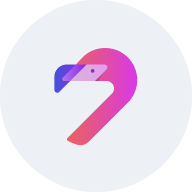Dora Factory is an open-source, community-driven DAO-as-a-service infrastructure for decentralized governance. It was built to effectively manage, curate and incentivize developer communities with their native token. DORA is the name and ticker symbol for the native ERC-20 token of the project.
Built on Substrate, the programmable infrastructure of Dora Factory allows developers to make pallets such as on-chain voting and add them to its parachain or Ethereum Layer 2 chain.
Dora Factory has three elements: Polkadot Factory, Ethereum Factory, and virtual bridge. On Polkadot, DAO functionalities can be performed through pallets. On Ethereum, individual smart contracts can be deployed through Dora Factory contracts for governance.
Apart from bridges connecting Polkadot Relay Chain with other critical public chains, Dora Factory has built a simplified virtual bridge for user convenience. This bridge can transfer tokens to Dora's parachain from ecosystems outside Polkadot, enabling users to store crypto assets in cross-chain vaults.
The DORA token is primarily used for governing Dora Factory. However, users and holders of DORA can engage in staking, mining, and even performing financial operations within the native ecosystem. However, unlike many other cryptocurrencies, DORA cannot be utilized as a currency to exchange goods and services.
Several use cases of the project include voting, fundraising (dutch auction, bonding curve fundraiser, quadratic fundraiser), incentive protocol, dispute resolution, and admin tool pallets. Dora Factory's governance is performed by two central bodies: the governance DAO (open for all DORA holders) and the Council (for the core team of the project).
DORA price and tokenomics
The total supply of DORA is 10 million, and its price depends on the projects availing of the services offered by the Dora Factory. The platform held a public sale on March 21, 2021, selling tokens worth $180,000. Each DAO can be created within the project's ecosystem by staking 100 DORA tokens, which users get back once the DAO is dissolved.
The token also incentivizes validators, nominators, and other members to engage with the ecosystem. It follows a linear inflation model to do so at 1,000,000 DORAs per annum unless the members vote otherwise.
The inflation rate starts at 10% for the initial year and then gradually decreases annually, which naturally impacts the DORA charts. 2% of tokens created from yearly inflation are allocated to their treasury, while the rest are allocated amongst nominators and validators.
About the founders
Jiannan Zhang, an Oxford alumnus and the founder and CEO of DoraHacks, works as an architect for Dora Factory. The project is backed by well-known names such as DoraHacks Global Hackathon Series, HackerLink Grants, Hashkey, Hypersphere, CMS, Fundamental Tabs, and Signum Capital.
DORA Factory has successfully engaged blockchain developers all across the globe. In the DORA ecosystem, eight projects, including DAOrayaki, LA DAO, Alexandria, EntangledQuery, etc., raised $50,000.













